What Is Intralesional Corticosteroids (ILCs) Injection?
Intralesional corticosteroids (ILCs), also known as steroid injections, involve the direct injection of a corticosteroid solution into the affected areas of the skin or just beneath its surface. Corticosteroids are synthetic versions of cortisol; a hormone that helps regulate inflammation and immune responses.
Steroid injections are a non-surgical option for revitalizing hair and are commonly used in treating various skin conditions, including hair loss.
How Does Steroid Injections Act as A Treatment For Hair Loss?
ILCs are a targeted treatment used for alopecia areata. Alopecia areata is an autoimmune condition where the immune system mistakenly attacks hair follicles, resulting in patchy hair loss.
By delivering corticosteroids directly into the affected scalp areas, these injections suppress the immune response. They do so by reducing the activity of T-cells (a type of immune cell involved in the attack) to suppress inflammation, and improve scalp health to encourage hair regrowth.
The effectiveness of steroid injections can vary depending on individual factors such as the extent of hair loss and underlying conditions. During a consultation, the doctor will evaluate your condition to determine your suitability for ILCs and recommend the most appropriate hair restoration options.
Citation source 1: International Journal of Trichology Updated June 2010
Types of Hair Loss Treated with Steroids
Alopecia Areata: An autoimmune disorder where the immune system attacks hair follicles, leading to patchy hair loss.
Hair Loss Conditions such as Androgenetic Alopecia (Male/Female Pattern Baldness) caused by stress, nutritional deficiencies, or hormonal imbalances are NOT Typically Treated with Steroids
Steroids for hair loss can be administered in several ways:
- Topical Steroids: Creams or ointments applied directly to the affected area.
- Intralesional Steroid Injections: Steroid injections directly into the scalp lesions.
- Oral Steroids: Steroid medication taken orally (usually reserved for more severe cases).
Patient’s Suitability
Patient suitability for steroid treatment of hair loss, primarily for conditions like alopecia areata, hinges on a comprehensive evaluation. This begins with a detailed medical history review, including any pre-existing conditions like diabetes, high blood pressure, or autoimmune disorders, as these can be exacerbated by steroid use. A thorough physical examination of the scalp is conducted to assess the type and extent of hair loss. Crucially, a consultation will involve discussion of potential risks and benefits, including the possibility of side effects like skin thinning, increased infection risk, or systemic effects depending on the steroid type and administration route. Blood work is often necessary to establish baseline health parameters and check for any underlying issues that could contraindicate steroid use. Further testing, such as a scalp biopsy, might be considered if the diagnosis is uncertain or to rule out other causes of hair loss. Ultimately, the decision to use steroids for hair loss is made collaboratively between the patient and doctor after careful consideration of all factors.
Schedule a consultation to speak to our doctors.
Disclaimer: Information presented is accurate at the time of print. Websites and references listed are not endorsed by 21 Medical Aesthetics and do not necessarily reflect the views of our medical team. Information is researched and displayed for demonstrative purposes only. It should not be used for personal diagnosis or as a substitute for professional medical consultation.
External Links
| A lesser known medical intervention for hair loss - PRP (platelet-rich plasma) Therapy. |
| Singapore Local Medical Research Resources & Associations |
| Informed Decisions for Hair Loss: A Resource of Credible Clinical Studies |
| Navigating Hair Restoration: A Guide to Reliable International Medical Journals |
Sources:
https://academic.oup.com/bjd/article-abstract/94/s12/51/6669697?redirectedFrom=fulltext
https://pmc.ncbi.nlm.nih.gov/articles/PMC3002419
https://pubmed.ncbi.nlm.nih.gov/10727299
https://pubmed.ncbi.nlm.nih.gov/19852119
https://pubmed.ncbi.nlm.nih.gov/2022873
https://pubmed.ncbi.nlm.nih.gov/7153406
https://pmc.ncbi.nlm.nih.gov/articles/PMC8752075
https://www.bad.org.uk/pils/intralesional-steroid-therapy
https://www.nhs.uk/conditions/steroid-injections
https://pmc.ncbi.nlm.nih.gov/articles/PMC6813483
Sources:
| Journal | Relevant Information Extracted | Reliability |
| https://academic.oup.com/bjd/article-abstract/94/s12/51/6669697?redirectedFrom=fulltext | The place of intralesional steroid therapy in dermatology. | Published on pubmed. Impact factor 11.11. Peer reviewed. British Journal of Dermatology. |
| https://pmc.ncbi.nlm.nih.gov/articles/PMC3002419/ | Intralesional Steroids for Alopecia Areata. | Published on pubmed. Impact factor 0.67. Peer reviewed. Open Access. International Journal of Trichology. |
| https://pubmed.ncbi.nlm.nih.gov/10727299/ | Alopecia Areata Update. | Published on pubmed. Impact factor 12.8. Peer reviewed. Journal of the American Academy of Dermatology |
| https://pubmed.ncbi.nlm.nih.gov/19852119/ | Treatment of severe alopecia areata with intralesional steroid injections. | Published on pubmed. Impact factor 1.608. Peer Reviewed. Open Access. Journal of Drugs in Dermatology |
| https://pubmed.ncbi.nlm.nih.gov/2022873/ | Alopecia areata. A workshop. Bethesda, Maryland. | Published on pubmed. Impact factor 6.5. Peer reviewed. Journal of Investigative Dermatology. |
| https://pubmed.ncbi.nlm.nih.gov/7153406/ | Ultrasonic assessment of cutaneous atrophy caused by intradermal corticosteroids. | Published on pubmed. Impact factor 2.4. Peer reviewed. Journal of Dermatologic Surgery and Oncology. |
| https://pmc.ncbi.nlm.nih.gov/articles/PMC8752075/ | Case study of steroid injection | Published on pubmed. Peer reviewed. Publisher is dovepress Impact factor 4.7 |
| https://www.bad.org.uk/pils/intralesional-steroid-therapy/ | What is intralesional steroid therapy | british association of dermatologists Has a journal with impact factor of 11.11 |
| https://www.nhs.uk/conditions/steroid-injections/ | What what areas are steroids used in | NHS |
| https://pmc.ncbi.nlm.nih.gov/articles/PMC6813483/ | Absolute contraindications | Published in pub med Open access Impact factor 0.778 Peer reviewed |
